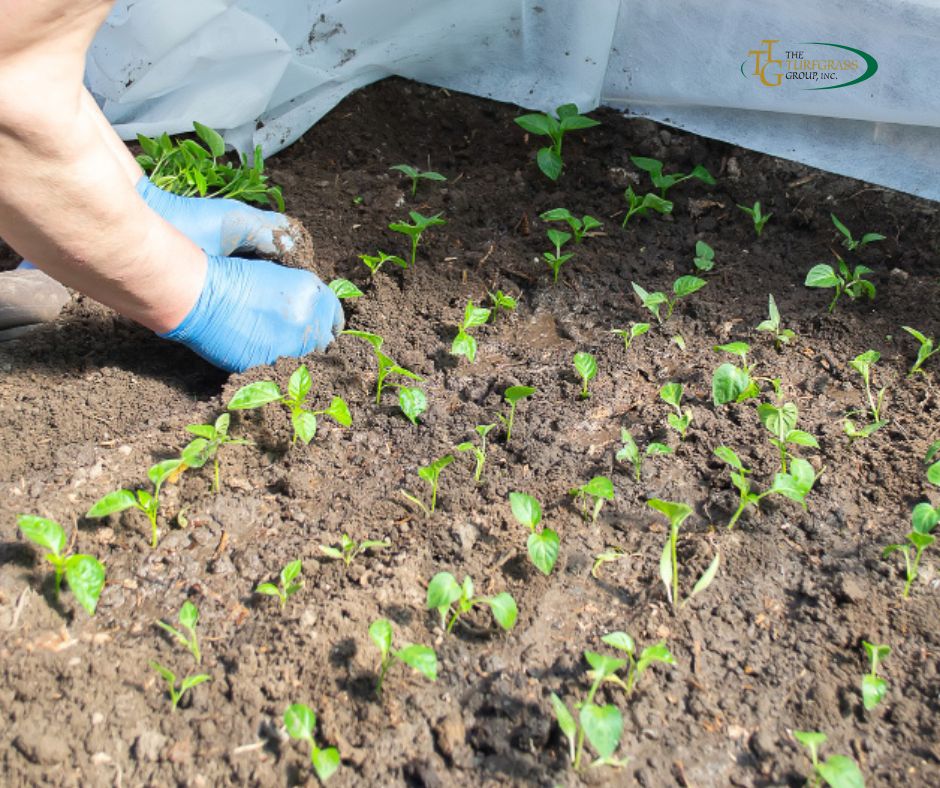
Spring is a critical time for managing soil moisture levels in gardens and farms.
As the weather warms and plants begin their growth cycle, adequate soil moisture becomes essential for healthy plant development.
However, managing soil moisture in spring can be challenging due to fluctuating weather patterns and variable precipitation.
In this guide, we will explore practical strategies for managing soil moisture levels in spring to promote optimal plant growth and yield.
Understanding Soil Moisture:
Soil moisture refers to the amount of water present in the soil.
It plays a vital role in plant growth by influencing nutrient uptake, root development, and overall plant health.
Soil moisture levels can vary depending on factors such as soil type, drainage, weather conditions, and irrigation practices.
In spring, soil moisture levels can fluctuate rapidly due to factors like increased evaporation rates, inconsistent rainfall, and thawing of frozen ground.
Therefore, gardeners and farmers must monitor and manage soil moisture effectively to ensure optimal growing conditions for plants.
Strategies for Managing Soil Moisture in Spring:
Soil Testing:
Before planting, it is essential to conduct a soil test to determine its moisture content and composition.
Soil testing kits are readily available at garden centers and agricultural extension offices.
By analyzing the soil, gardeners and farmers can determine its moisture levels and make informed decisions regarding irrigation and soil amendments.
Mulching:
Mulching is a highly effective technique for conserving soil moisture in spring.
By applying a layer of organic mulch, such as straw, wood chips, or compost, around plants, gardeners can help retain soil moisture, suppress weed growth, and regulate soil temperature.
Mulching also improves soil structure and promotes microbial activity, further enhancing moisture retention.
Proper Irrigation:
In spring, plants have increased water requirements due to active growth and transpiration.
Therefore, it is essential to provide adequate irrigation to maintain optimal soil moisture levels.
However, overwatering can lead to waterlogged soil and root rot, while underwatering can stress plants and hinder their growth.
To ensure efficient irrigation, gardeners and farmers should water deeply and infrequently, allowing the soil to dry out slightly between watering sessions.
Additionally, using drip irrigation or soaker hoses can deliver water directly to the root zone, minimizing water waste and promoting efficient moisture distribution.
Rainwater Harvesting:
Spring often brings unpredictable weather patterns, including periods of heavy rainfall followed by dry spells.
To harness and utilize rainwater effectively, gardeners and farmers can implement rainwater harvesting systems.
These systems collect rainwater from roofs or other surfaces and store it in barrels or cisterns for later use in irrigation.
Rainwater harvesting not only conserves water but also reduces reliance on municipal water sources.
Soil Amendments:
Adding organic matter, such as compost or aged manure, to the soil can improve its moisture retention capacity.
Organic matter acts as a sponge, holding onto water and releasing it slowly to plant roots.
Incorporating compost into the soil also enhances soil structure, drainage, and nutrient availability, creating an optimal growing environment for plants.
Monitoring and Adjusting:
Regular monitoring of soil moisture levels is crucial throughout the spring growing season.
Gardeners and farmers should use moisture meters or dig into the soil to assess moisture content.
Observing plant health and growth can also provide valuable insights into soil moisture adequacy.
Based on monitoring results, adjustments to irrigation schedules and practices may be necessary.
During periods of prolonged dry weather, increasing irrigation frequency or duration can help maintain optimal soil moisture levels.
Conversely, during periods of heavy rainfall, reducing irrigation or improving drainage may be required to prevent waterlogging and root rot.
Implementing Water-Saving Techniques:
Conserving water is not only environmentally responsible but also economically beneficial.
In addition to efficient irrigation methods like drip irrigation and rainwater harvesting, there are other water-saving techniques that gardeners and farmers can implement in spring.
One such technique is scheduling irrigation during early morning or late evening hours when evaporation rates are lower, minimizing water loss to evaporation.
Another technique is using water-saving devices such as moisture sensors or timers to automate irrigation systems and ensure water is applied only when needed.
Crop Selection and Rotation:
Choosing appropriate crops for spring planting can also help manage soil moisture levels effectively.
Selecting drought-tolerant or water-efficient varieties can reduce water demand and minimize the risk of moisture stress during dry periods.
Additionally, practicing crop rotation can improve soil structure and moisture retention, reducing the need for supplemental irrigation.
Soil Conservation Practices:
Soil conservation practices play a vital role in maintaining soil moisture levels and preventing erosion, especially in spring when soil is most vulnerable to erosion due to thawing and heavy rainfall.
Techniques such as contour plowing, terracing, and cover cropping help protect soil from erosion, preserve soil moisture, and promote overall soil health.
Education and Outreach:
Finally, education and outreach efforts are essential for raising awareness about the importance of soil moisture management in spring.
Providing resources, workshops, and demonstrations on soil conservation practices and water-efficient gardening techniques can empower gardeners and farmers to adopt sustainable approaches to soil moisture management.
Conclusion:
Managing soil moisture levels in spring requires careful planning, monitoring, and implementation of various strategies and techniques.
By incorporating practices such as soil testing, mulching, proper irrigation, rainwater harvesting, soil amendments, monitoring and adjusting, water-saving techniques, crop selection and rotation, soil conservation practices, and education and outreach, gardeners and farmers can create resilient and productive growing environments.
With proactive soil moisture management, springtime gardening and farming can thrive while minimizing environmental impact and resource use.
For further assistance and guidance on soil moisture management and sustainable gardening practices, feel free to reach out to us at The Turfgrass Group.
FAQs
What is soil moisture, and why is it essential in spring?
Soil moisture refers to the water content present in the soil, which is crucial for plant growth as it affects nutrient uptake, root development, and overall plant health. In spring, it becomes particularly critical as plants start their growth cycle, requiring adequate moisture for optimal development.
How do soil moisture levels fluctuate in spring?
Several factors contribute to soil moisture fluctuations in spring, including increased evaporation rates, variable precipitation patterns, and thawing of frozen ground. These factors make it challenging for gardeners and farmers to maintain consistent moisture levels in the soil.
What are some effective strategies for managing soil moisture in spring?
Effective strategies include soil testing to assess moisture content, mulching to retain moisture and suppress weed growth, proper irrigation techniques, rainwater harvesting, soil amendments with organic matter, regular monitoring, and adjusting irrigation practices based on observations.
How can I ensure efficient irrigation in spring?
Efficient irrigation involves watering deeply and infrequently, allowing the soil to dry out slightly between watering sessions. Drip irrigation or soaker hoses can deliver water directly to the root zone, minimizing water waste and promoting efficient moisture distribution.
What is rainwater harvesting, and how can it be implemented?
Rainwater harvesting involves collecting rainwater from roofs or other surfaces and storing it in barrels or cisterns for later use in irrigation. This technique conserves water and reduces reliance on municipal water sources, which is particularly beneficial during periods of variable precipitation in spring.
How do soil amendments contribute to moisture retention?
Adding organic matter such as compost or aged manure to the soil improves its moisture retention capacity by acting as a sponge, holding onto water and releasing it slowly to plant roots. Incorporating compost also enhances soil structure, drainage, and nutrient availability.
How can I adjust irrigation practices based on soil moisture monitoring?
Regular monitoring of soil moisture levels using moisture meters or simple soil assessments helps in determining irrigation needs. Adjustments to irrigation schedules and practices, such as increasing frequency during dry periods or reducing irrigation during heavy rainfall, can be made accordingly.
What are some water-saving techniques for managing soil moisture in spring?
Water-saving techniques include:
- Scheduling irrigation during early morning or late evening hours to minimize evaporation.
- Using moisture sensors or timers to automate irrigation systems.
- Selecting drought-tolerant or water-efficient crop varieties.
What role do soil conservation practices play in managing soil moisture?
Soil conservation practices such as contour plowing, terracing, and cover cropping help prevent erosion, preserve soil moisture, and promote overall soil health, which is especially important in spring when soil is vulnerable to erosion due to thawing and heavy rainfall.
How can education and outreach efforts contribute to soil moisture management?
Education and outreach efforts raise awareness about the importance of soil moisture management, providing resources, workshops, and demonstrations on soil conservation practices and water-efficient gardening techniques, empowering gardeners and farmers to adopt sustainable approaches.
How can I prevent overwatering or underwatering my plants in spring?
Overwatering can lead to waterlogged soil and root rot while underwatering can stress plants and hinder their growth. To prevent these issues, ensure that you water deeply and infrequently, allowing the soil to dry out slightly between watering sessions. Monitoring soil moisture levels and observing plant health can help you adjust irrigation practices accordingly.
Are there any natural methods to help manage soil moisture in spring?
Yes, incorporating natural methods like planting cover crops or using living mulches can help manage soil moisture levels in spring. Cover crops protect the soil surface, reduce evaporation, and improve soil structure while living mulches provide continuous ground cover and regulate soil temperature and moisture retention. These methods promote soil health and moisture conservation sustainably.
